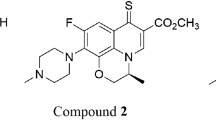Summary
Simvastatin, a potent inhibitor of 3-hydroxy-3-methylglutaryl-coenzyme A reductase (HMG-CoA) is known to stimulate apoptotic cell death and induce cell cycle arrest through inhibition of proteasome. The purpose of this study is to investigate whether simvastatin would be synergistic with irinotecan against human non-small cell lung cancer (NSCLC) cells. Antitumor effect was measured by growth inhibition of cells and 3-(4,5-dimethylthiazol-2-yl)-2,5-diphenyltetrazolium bromide assay. The cytotoxic interaction between irinotecan and simvastatin was assessed using the combination index. Effects on cell cycle distribution and apoptosis were determined by flow cytometry and DNA fragmentation. Proteasome activity was measured by ELISA quantification of 20S proteasome. NF-κB activation was determined using TransAM™ NF-κB p65 Transcription Factor Assay Kit. IκB-α was measured by immunoblot. A combination of irinotecan with simvastatin showed significantly enhanced cell growth inhibition compared with irinotecan alone, which resulted in a synergistic cytotoxicity. Irinotecan and simvastatin combination treatment of A549 and H460 cells increased G1 phase arrest, which was associated with up-regulation of p21WAF1/CIP and p53 compared with irinotecan alone. In addition, simvastatin combination treatment increased irinotecan-related apoptosis as determined by fluorescence microscopy and flow cytometric analysis. We also found that combination therapy showed superior proteasome inhibitory activity leading to effectively suppress NF-κB transcription factor activation. Consistently, this effect was associated with up-regulation of IκB-α. These findings suggest that simvastatin enhances irinotecan-induced apoptosis in human NSCLC cells through inhibition of proteasome activity.









Similar content being viewed by others
References
Goldstein JL, Brown MS (1990) Regulation of the mevalonate pathway. Nature 343:425–430. doi:10.1038/343425a0
Istvan ES, Deisenhofer J (2001) Structural mechanism for statin inhibition of HMG-CoA reductase. Science 292:160–164. doi:10.1126/science.1059344
Demierre MF, Higgins PD, Gruber SB, Hawk E, Lippman SM (2005) Statins and cancer prevention. Nat Rev Cancer 5:930–942. doi:10.1038/nrc1751
Wong WW, Dimitroulakos J, Minden MD, Penn LZ (2002) HMG-CoA reductase inhibitors and the malignant cell: the statin family of drugs as triggers of tumor-specific apoptosis. Leukemia 16:508–519. doi:10.1038/sj.leu.2402476
Laufs U, Marra D, Node K, Liao JK (1999) 3-Hydroxy-3-methylglutaryl-CoA reductase inhibitors attenuate vascular smooth muscle proliferation by preventing rho GTPase-induced down-regulation of p27(Kip1). J Biol Chem 274:21926–21931
Rao S, Lowe M, Herliczek TW, Keyomarsi K (1998) Lovastatin mediated G1 arrest in normal and tumor breast cells is through inhibition of CDK2 activity and redistribution of p21 and p27, independent of p53. Oncogene 17:2393–2402. doi:10.1038/sj.onc.1202322
Ahn KS, Sethi G, Aggarwal BB (2008) Reversal of chemoresistance and enhancement of apoptosis by statins through down-regulation of the NF-kappaB pathway. Biochem Pharmacol 75:907–913. doi:10.1016/j.bcp.2007.10.010
Coogan PF, Smith J, Rosenberg L (2007) Statin use and risk of colorectal cancer. J Natl Cancer Inst 99:32–40. doi:10.1093/jnci/djk003
Hoffmann P, Roumeguere T, Schulman C, van Velthoven R (2006) Use of statins and outcome of BCG treatment for bladder cancer. N Engl J Med 355:2705–2707. doi:10.1056/NEJMc062714
Platz EA, Leitzmann MF, Visvanathan K, Rimm EB, Stampfer MJ, Willett WC et al (2006) Statin drugs and risk of advanced prostate cancer. J Natl Cancer Inst 98:1819–1825. doi:10.1093/jnci/djj499
Schmidmaier R, Baumann P, Bumeder I, Meinhardt G, Straka C, Emmerich B (2007) First clinical experience with simvastatin to overcome drug resistance in refractory multiple myeloma. Eur J Haematol 79:240–243. doi:10.1111/j.1600-0609.2007.00902.x
Garcia-Carbonero R, Supko J (2002) Current perspectives on the clinical experience, pharmacology, and continued development of the camptothecins. Clin Cancer Res 8:641–661
Rothenberg ML (2001) Irinotecan (CPT-11): recent developments and future directions–colorectal cancer and beyond. Oncologist 6:66–80
Huang TT, Wuerzberger-Davis SM, Seufzer BJ, Shumway SD, Kurama T, Boothman DA et al (2000) NF-kappaB activation by camptothecin. A linkage between nuclear DNA damage and cytoplasmic signaling events. J Biol Chem 275:9501–9509
Wang CY, Cusack JC, Liu R, Baldwin AS (1999) Control of inducible chemoresistance: enhanced anti-tumor therapy through increased apoptosis by inhibition of NF-kappaB. Nat Med 5:412–417. doi:10.1038/7410
Ryan DP, O’Neil BH, Supko JG, Rocha Lima CM, Dees EC, Appleman LJ et al (2006) A Phase I study of bortezomib plus irinotecan in patients with advanced solid tumors. Cancer 107:2688–2697. doi:10.1002/cncr.22280
Mantha AJ, Hanson JE, Goss G, Lagarde AE, Lorimer IA, Dimitroulakos J (2005) Targeting the mevalonate pathway inhibits the function of the epidermal growth factor receptor. Clin Cancer Res 11:2398–2407. doi:10.1158/1078-0432.CCR-04-1951
Chou TC, Motzer RJ, Tong Y, Bosl GJ (1994) Computerized quantitation of synergism and antagonism of taxol, topotecan, and cisplatin against human teratocarcinoma cell growth: a rational approach to clinical protocol design. J Natl Cancer Inst 86:1517–1524
Ahn KS, Sethi G, Aggarwal BB (2007) Simvastatin potentiates TNF-alpha-induced apoptosis through the down-regulation of NF-kappaB-dependent antiapoptotic gene products: role of IkappaBalpha kinase and TGF-beta-activated kinase-1. J Immunol 178:2507–2516
Rao S, Porter DC, Chen X, Herliczek T, Lowe M, Keyomarsi K (1999) Lovastatin-mediated G1 arrest is through inhibition of the proteasome, independent of hydroxymethyl glutaryl-CoA reductase. Proc Natl Acad Sci U S A 96:7797–7802
Mitchell BS (2003) The proteasome–an emerging therapeutic target in cancer. N Engl J Med 348:2597–2598. doi:10.1056/NEJMp030092
Orlowski RZ, Kuhn DJ (2008) Proteasome inhibitors in cancer therapy: lessons from the first decade. Clin Cancer Res 14:1649–1657. doi:10.1158/1078-0432.CCR-07-2218
Adams J (2004) The development of proteasome inhibitors as anticancer drugs. Cancer Cell 5:417–421
Nakajima Y, Miyake S, Tanaka K, Ogiya K, Toukairin Y, Kawada K et al (2004) The expressions of p21 and pRB may be good indicators for the sensitivity of esophageal squamous cell cancers to CPT-11: Cell proliferation activity correlates with the effect of CPT-11. Cancer Sci 95:464–468
Levesque AA, Kohn EA, Bresnick E, Eastman A (2005) Distinct roles for p53 transactivation and repression in preventing UCN-01-mediated abrogation of DNA damage-induced arrest at S and G2 cell cycle checkpoints. Oncogene 24:3786–3796. doi:10.1038/sj.onc.1208451
Acknowledgment
This study was supported by a grant from National Cancer Center 0810130-1.
Author information
Authors and Affiliations
Corresponding author
Additional information
Authors In Hae Park and Jin Young Kim contributed equally to this work.
Rights and permissions
About this article
Cite this article
Park, I.H., Kim, J.Y., Choi, J.Y. et al. Simvastatin enhances irinotecan-induced apoptosis in human non-small cell lung cancer cells by inhibition of proteasome activity. Invest New Drugs 29, 883–890 (2011). https://doi.org/10.1007/s10637-010-9439-x
Received:
Accepted:
Published:
Issue Date:
DOI: https://doi.org/10.1007/s10637-010-9439-x




